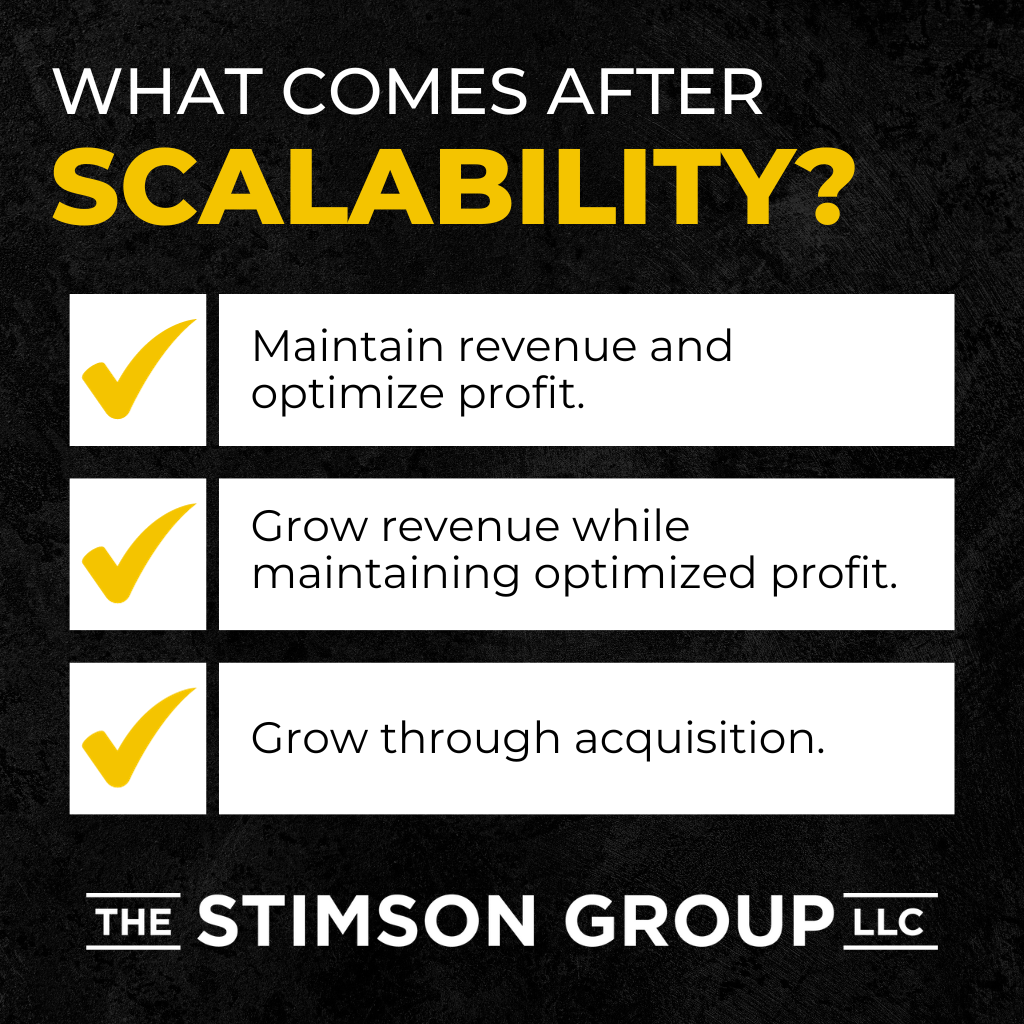
The first topic I discuss with each new client, whether they’re a business owner or an owner’s group, is goals.
What are the owner’s goals for the business? What’s their exit strategy? Where do they want their business to be in five years?
The owner may not have an answer to some of these questions. For example, they might not know what the exit mechanism will be because they haven’t talked about selling the company, buying the partners out, or having employees or family take it over. That’s fine.
All owners want their businesses to provide them with income commensurate with their contributions. They also want time, because without time, all the money in the world is useless. Most of my conversations with owners turn to how they’ll get their time back so they can pursue other endeavors that are important to them.
This leads to talking about a scalable balance, which is an expressway to having more disposable time to do whatever the owner wants to do, even if that’s growing the business faster.
Scalability helps owners achieve their business goals. If you have a scalable business, you have control of your trajectory.
What comes after scalability? Let’s look at your options.
Scalability Will Help You…
1. Maintain revenue and optimize profit.
If your business is scalable, you can maintain a steady level of work that you’re comfortable with and that meets your lifestyle needs.
In my past life, I used to say, “If you’re not growing, you’re dying.” Now I know that’s not true. If your profit and time needs don’t coincide, you have a problem.

A scalable business model puts you in a much better position to maintain business and enjoy your lifestyle than any other model. Major challenges like employee attrition and client turnover aren’t as upsetting.
In a sustainable model, you maintain revenue because there’s always another customer waiting in the wings. You turn down business because your focus is on the best customers and the highest profit. Losing some clients isn’t a big deal.
Employee attrition isn’t such a big deal, either. You can bring someone new into a well-thought-out process, and they’ll have no problem adapting.
Life is a lot less scary once you’ve reached this level of balance.
2. Grow revenue while maintaining optimized profit.
Some owners like to grow revenue. They’re in business because they like to keep score. Good for them.
If this is you, as long as you’re growing revenue and remaining profitable, you’re having fun. You’re in a balanced position and you’ve got some time on your hands. You can now put even more energy into your business to grow revenue while maintaining profit.
Of course, you’ll have to invest in the selling sphere, whether it’s through marketing, business development, or growing your sales team. This will require some maintenance and handholding, but it’s a fast way to increase revenue organically.
You’ll also have to make sure your planning team can keep up; planning will have to grow at a faster pace than selling.
In a scalable business model, when you know you’re going to sell successfully, you’ve got only two levers — selling and planning — rather than the 10–20 levers you would have had your hands on before.
Say you’re trying to double your revenue in two years. In the scalable model, you have the selling lever and the planning lever. You don’t have to worry about execution because your ability to execute more jobs is a byproduct of maintaining planning (provided that selling has done its job and delivered the extra revenue).
A scalable business has fewer elements to micromanage, which makes it easier to control growth.

3. Grow through acquisition.
Say you’re seriously entrepreneurial and organic growth isn’t cutting it. Maybe your exit strategy is to achieve a certain size and profitability and sell the business for a high multiple. Good for you.
This goal is a lot easier to achieve if you’re starting from a position of scalable balance. If you’ve found your balance and have the time to invest, growth through acquisition is much easier.
You can focus on acquiring businesses that are scalable, which makes them easier to work into your processes. It’s also easier to take on a non-scalable company and adapt its revenue mechanism to your scalable delivery system. Once again, planning has to keep up with growth.
Acquisitions will be easier because you’re not adapting to disparate selling and operational processes. Instead, you’re making the acquisition fit your balanced and scalable model. Anything that doesn’t fit is excess baggage.
An aggressive company might acquire two or three smaller companies a year. Synchronizing new companies becomes increasingly difficult as an organization grows.
If you’re a large company buying a small company, you just slap everybody around, and they fall into line. However, you’ll often acquire companies that bring more value to the table than customers and brands. Fitting these companies into your model takes more delicacy and patience.
Even then — if your business is scalable — you can handle new revenue, and you know how to onboard new people into the business processes. Scalability makes it much easier to find roles for all the key people you’ve acquired.
Conclusion
What do you want out of scalability? There’s no wrong answer. It depends on your goals.
If your business is delivering good profit for risk and has given you back precious time, you can go in any direction that suits your wants and needs.
Doesn’t that feel good?





Leave a Reply